Tomato "Japanese truffle", ideal for conservation and not capricious in care: reviews, photos and growing secrets
Tomato variety Japanese truffle by photo and description resembles a mushroom with the same name or truffle sweets, not only in shape, but also in sweet taste. The uniqueness of the variety lies in its color scheme, which can bewitch with a variety of shades.
Any garden will turn into a real flower garden from such a palette! Unusual tomatoes will decorate any summer dish and winter preparations, looking smartly in glass jars.
The content of the article
Characteristics and description of the variety
This tomato includes a whole series of varieties, consisting of five subspecies. Numerous reviews indicate only a change in the taste and color of ripe vegetables. Agricultural technology in all five subspecies remains unchanged.
Subspecies palette
Let's get acquainted with the existing subspecies of the Japanese variety. As mentioned above, the main difference between the culture is the color of the fruits.
The advantages and disadvantages are the same for all types:
- Red. Of all the subspecies, the most common type. Ripe vegetables are excellent in summer salads, vegetable stews, and first courses. They do not lose their taste in preserves and marinades. The taste of vegetables is sweet. They are distinguished by long-term storage and good transportability.
- Pink.The characteristics and reviews indicate that it is in less demand among gardeners because of the average yield. But the average result is compensated by the excellent taste of ripe fruits, rich, sweet, without sourness. Many people find fruity notes in the taste.
- The black.With their color, tomatoes resemble the color of dark chocolate. The subspecies is interesting for winter preparations: pickles, salting, conservation. It has a high fruiting rate and a pleasant taste of ripe vegetables. The main disadvantage is the short shelf life.
- Orange.Due to the high sugar content, the taste can be attributed to fruity. Color uncharacteristic for tomato, deep orange, more velvety than glossy. It resembles a frozen drop of fiery lava.
- Gold. The color of vegetables is rich yellow, the color of the bright sun. The taste is similar to the orange subspecies, noticeably sweet due to the increased amount of sugar. The rate of fruiting depends on the growing conditions.
In the photographs, representatives of the Japanese species.
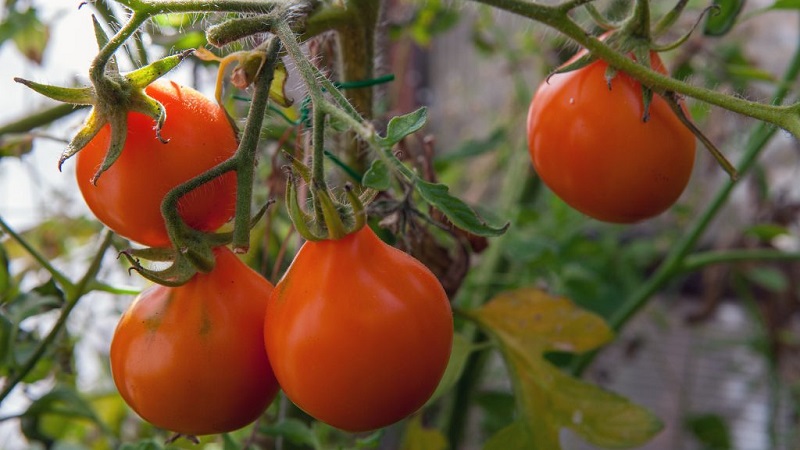
Distinctive features
Bush indeterminate, height - 1.5-2 m, the stem is not strong enough, the foliage is medium, the leaves are small. The inflorescences are simple, purple in color, growing in clusters. The stem forms up to 5 fruit-bearing branches; each brush sets 5-6 fruits.
The yield is high, 3 kg of fruits are harvested from 1 seedling, provided that no more than 4 plants are planted per 1 sq. m.
Mid-season species, from the moment of planting to full maturation, 110-120 days pass.
The culture is highly immune to the main diseases of the nightshade family. Recommended for cultivation in open ground and in greenhouse conditions.
The indeterminate type implies a mandatory garter: if this is not done, the tall stem will not support the weight of the fruiting branches and will break. In addition to the garter, the plants require regular pinching. Failure to remove rapidly growing young shoots will result in thickened plantings.
Fruit characteristics
The average weight of the fruit is 150-180 g, the shape is unusual, pear-shaped, rounded, narrowed towards the top. The taste is excellent, sweet, with an admixture of fruity notes, can be attributed to dessert. The pulp is dense, juicy. The peel is firm, not prone to cracking.
Thanks to their strong skin, tomatoes can withstand long-term storage without losing their presentation, they can be transported over any distance.

How to grow seedlings
Sowing seeds for seedlings begins 2 months before planting in the ground. Before sowing, the seeds undergo compulsory preparation.
Seed preparation
The seed is laid out on the table and carefully examined one at a time for visible damage. To test for emptiness, the seeds are placed in a saline solution for 10 minutes. Those that float to the surface are disposed of, the rest are washed with running water.
Reference. A saline solution is prepared from 1 teaspoon of salt and a glass of water.
Then the grains are disinfected in a weak solution of potassium permanganate for 20 minutes. This essential procedure leads to further healthy growth. seedlings... After disinfection, the seeds are washed with running water.
To improve germination, the seed is soaked in a growth stimulator for 10-12 hours. The most used drugs are "Zircon" and "Kornevin".
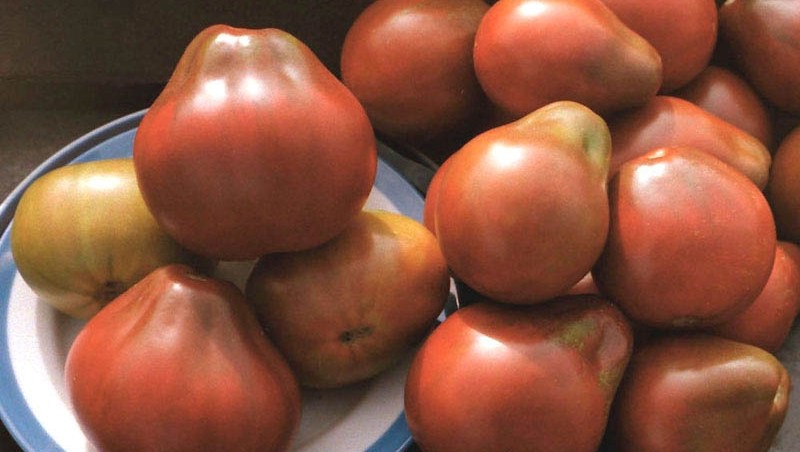
Capacity and soil
The soil is prepared from sod land, humus and washed river sand in a ratio of 2: 2: 1. All components are thoroughly mixed and the resulting mixture is poured with a hot solution of purple potassium permanganate. This technique disinfects the ground, destroying pathogens that can cause irreparable harm to plantings.
Reference. Sod land is distinguished by its porosity and rich composition of nutrients.
The disinfected soil is laid out in planting containers, at the bottom of which small drainage holes are previously made to drain excess moisture.
They are planted in a common wooden box or individual containers: plastic or peat cups. Peat cups are the most convenient container for breeding seedlings, since the plants do not need to be dived and transplanted: they are placed in the ground together with peat containers, which gradually dissolve in the ground.

Landing
The seeds are sown to a depth of 1.5 cm with a distance of 3 cm from each other, sprinkled with earth on top, slightly moistened with warm settled water and covered with a film to create a greenhouse effect. Planting containers are left in a room with a temperature of at least 20 ° C. Seed material germinates at lower temperatures, but seedlings will appear later.
Seedling care
When shoots appear, the film is removed and the containers are rearranged on the windowsill, but not on direct sunlight. Daylight hours should be at least 13 hours. If there is a shortage of daylight, fluorescent lamps are illuminated.
Pour with slightly warm, settled water along the edge of the nursery with an ordinary tablespoon. After watering, the soil is gently loosened without touching the young roots. The condition of the soil must be constantly monitored, not allowing it to dry out. But waterlogging is also not recommended, since unformed roots can rot.
When 2 true leaves appear, the seedlings dive, seating them in separate containers. During the pick, weak plants are utilized, leaving only strong and healthy bushes.
2 weeks before planting, the seedlings begin to harden, taking them outside in the daytime for 1 hour. Gradually, this interval is increased to 10 hours, and the night temperature in the room where the seedlings are brought is reduced to 13 ° C.
Important! 1 week before transplanting, the seedlings are fed with a full complex of mineral fertilizers with a predominance of potassium and phosphorus.
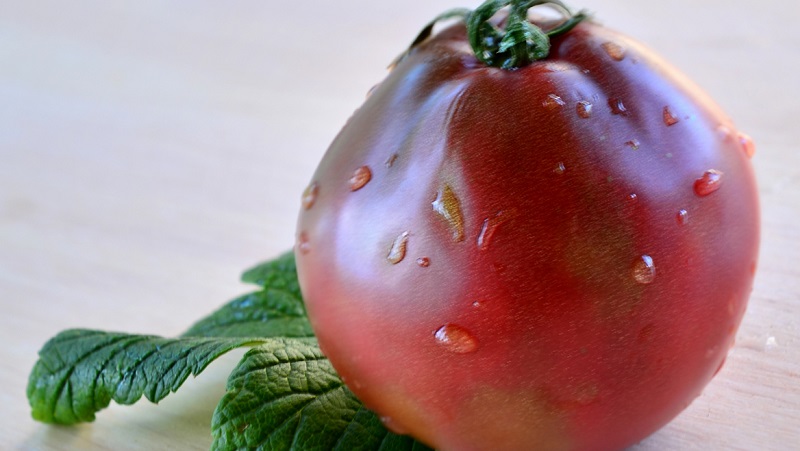
How to grow tomatoes
After 2 months, the seedlings are ready for transplanting into the ground. If by this time the soil temperature is less than 15 ° C, the planting of seedlings should be postponed. Cold ground will have a detrimental effect on the roots of young plants.
Landing
The soil is prepared in the fall, digging up and applying mineral fertilizers. In the spring, they dig it up again and a week before disembarkation, holes are made 15-20 cm deep.
Transplanted in the morning, in the evening or on a cloudy day. Such conditions are necessary for faster adaptation to new conditions. After transplanting, the holes are compacted, watered with warm water and left to get used to new conditions for 7-9 days.
Planting pattern: 50 cm - the distance between plants, 50 cm is left between the rows. For 1 sq. m place no more than 4 plants.
Further care
Regular watering is set no more than 2 times a week. Watered moderately, strictly at the root, with warm, settled water. Cold water to water not desirable. For settling and heating, water is poured into large containers in advance, which are installed on the site specifically for these purposes.
After watering, the soil is loosened and weeds are removed with roots. To retain moisture, the beds are mulched with straw or peat. This is especially helpful on dry days with strong evaporation.
The culture is fed three times during the entire growing season. Fertilizers or organic matter are used as top dressing. An infusion of mullein or bird droppings in a ratio of 1:15 is used as organic matter. The first top dressing is applied during flowering, the second time is fed during the formation of ovaries, the third top dressing is given during the fruiting period. At this time, potassium substances are added for a faster ripening of the fruits.
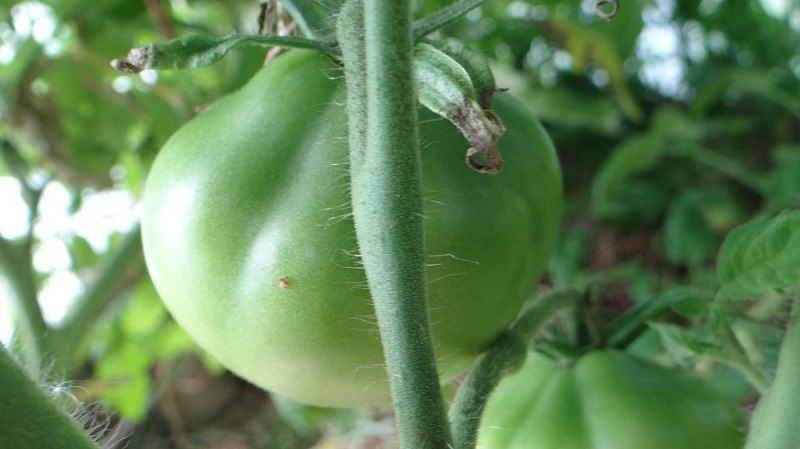
Features in care and possible difficulties
Tall bushes are subject to mandatory garter. The fruiting branches are so heavy that they break. If the integrity of the plant is violated, the movement of nutrients is not fully ensured. For this reason, broken hands do not provide enough nutrition for the developing fruits, and they stop developing.
To fix the plants, a wooden or metal support is installed next to each bush, to which the stem and branches of the plant are tied. A loose, weak stem can be damaged by wind and rain.
In addition to the garter, special attention should be paid pinching. Young shoots appear quickly, and if you do not get rid of them in time, this will lead to thickening of the plantings. The culture is formed in 1, 2 or 3 stems. When forming in 2 stems, one stepson is left under the first flower brush, when a plant is kept in 3 stems - 2 stepsons: under the first and above the first flower brush.
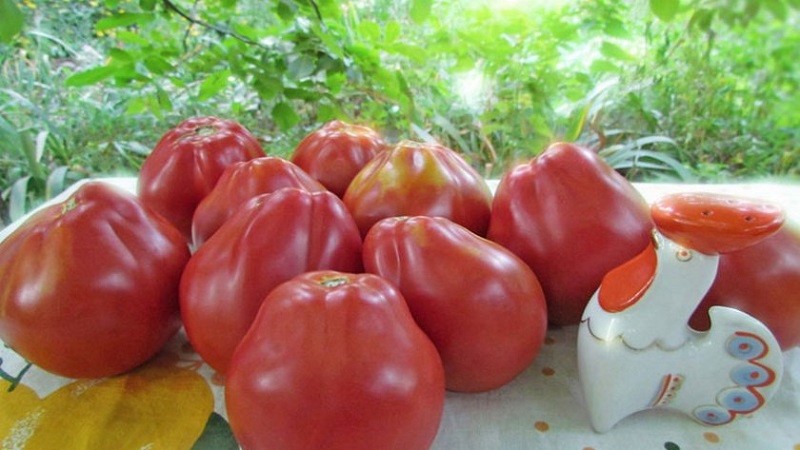
Diseases and pests
The culture has established itself as resistant to dangerous fungal diseases, therefore, elementary preventive measures are enough to keep the bushes healthy throughout the growing season. Prevention includes periodic loosening, moderate watering, mulching of the beds. The culture does not like cold water, so it should only be watered with warm and settled water.
Of the insect pests, the most dangerous are aphids and the Colorado potato beetle. Unfortunately, getting rid of the Colorado potato beetle is not easy. Therefore, it is especially important not to let him into his beds and not let him multiply. This requires daily inspection of each bush for the presence of the pest itself and its larvae, which are as dangerous as adults. The beetle is harvested by hand and burned in glass jars. In case of its large accumulation, the drug "Prestige" is used.
Aphids are removed with the help of a soap solution, which is used to treat plant stems. The solution is prepared by dissolving 1 piece of laundry soap in 1 bucket of water.
Nuances for open ground and greenhouse conditions
Greenhouse plants are much more likely to yield maximum yield than outdoor bushes. In the greenhouse, up to 4 kg are collected from 1 seedling. But in greenhouse conditions, the growth of bushes reaches 2 m, which is noticeably higher than in open beds. Therefore, the tops of the plants are pinched, thereby limiting further growth.
Regular airing of protected structures helps to prevent the multiplication of fungal spores and the attack of the main greenhouse pest - the spider mite. Fresh air destroys the usual habitat of the parasite.
All lower leaves must be removed without fail, otherwise, with constant contact with wet beds, they can rot and cause the spread of many fungal infections.
During fruiting, 3 brushes are left for full ripening, the rest of the fruits are plucked in advance and left to ripen at room temperature. In this way, the fruitful branches are unloaded, and the vegetables remaining on them ripen faster.
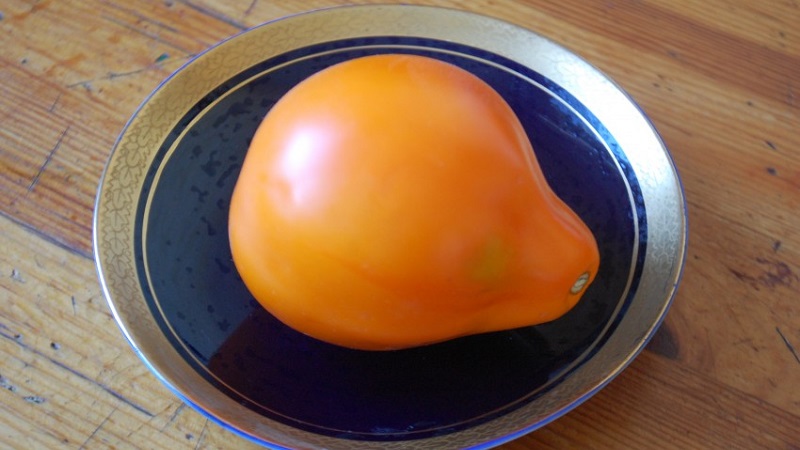
Harvesting and application of the crop
The collection of vegetables begins in June - early July. To prepare fresh salads in late autumn, half of the vegetables are removed green, leaving to ripen on their own. The taste of such tomatoes does not differ from those that have ripened in the beds. Green fruits are removed with brushes, thereby relieving the bush. Due to their excellent keeping quality, vegetables can be stored until the end of November in a cool room at a temperature of no more than 5 ° C.
The purpose of vegetables is universal: they are used for fresh dishes, canned food, pickles and salting... Also allowed for tomato products: adjika, juice, paste, ketchup.
Advantages and disadvantages
The variety has many positive qualities:
 adaptation to weather conditions;
adaptation to weather conditions;- unpretentious care;
- the possibility of breeding in all regions;
- high immunity to diseases;
- high rate of fruiting;
- excellent taste;
- variety of subspecies;
- self-maturation;
- long-term storage;
- transportation to any distance;
- versatility in cooking.
Of the shortcomings, the obligatory garter and regular pinching are distinguished. But these disadvantages can be attributed to the conditional, since there is nothing complicated in these procedures.
Farmers reviews
The positive assessments of gardeners are due not only to the color splendor, but also to the excellent taste of tomatoes. The opinions of some gardeners:
Tamara, Stary Oskol: “As an experiment, I sowed several seeds of all colors. All five subspecies ascended. And in the seedling period, and in the open field, the bushes stood healthy all season. The most neutral was the red tomato. The rest already had their own characteristics in taste. She immediately put the whole crop into culinary masterpieces. "
Victoria, Voronezh: “I became interested in the variety only because of the interesting color. I chose the black version for myself, as the most extraordinary. The first fruits were not long in coming. I was pleasantly surprised not only by the color appreciated by the guests, but also by the taste. The firm flesh is sweet and aromatic. I am very pleased with this tomato find. "
Conclusion
An unusual culture has confidently taken root in Russian beds thanks to the color palette and aesthetic pleasure. Tomato Japanese truffle with simple agricultural technology, high yield and strong immunity to diseases is an excellent option for exotic lovers in ordinary garden beds.
All that is needed to grow such a miracle is a few additional dressings and regular watering. In gratitude, the culture will endow you with unique exotic vegetables.